Square Serving Dish with Bail Handle
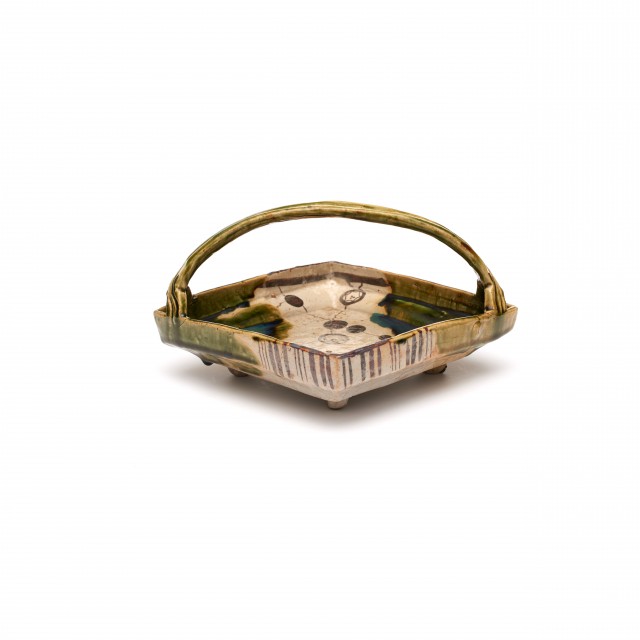
Photography by Synthescape, Digital image © Asia Society
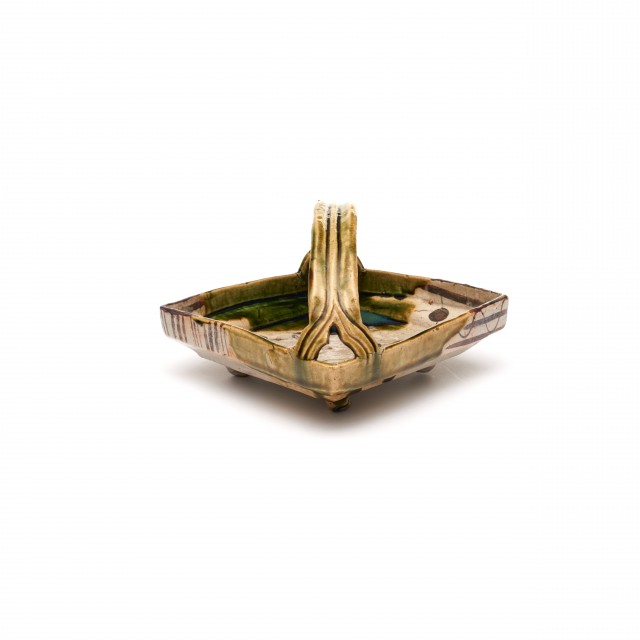
Photography by Synthescape, Digital image © Asia Society
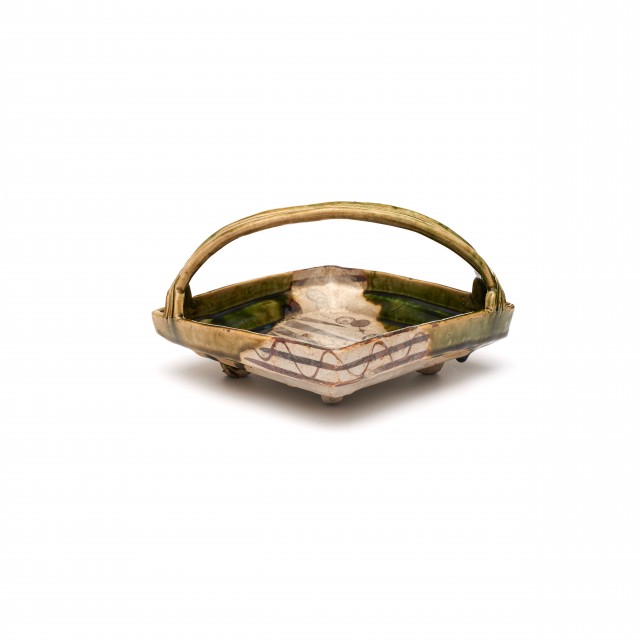
Photography by Synthescape, Digital image © Asia Society
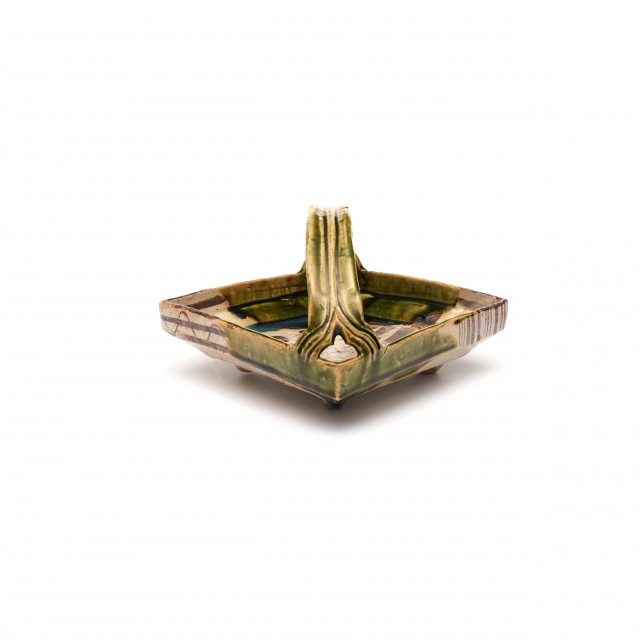
Photography by Synthescape, Digital image © Asia Society
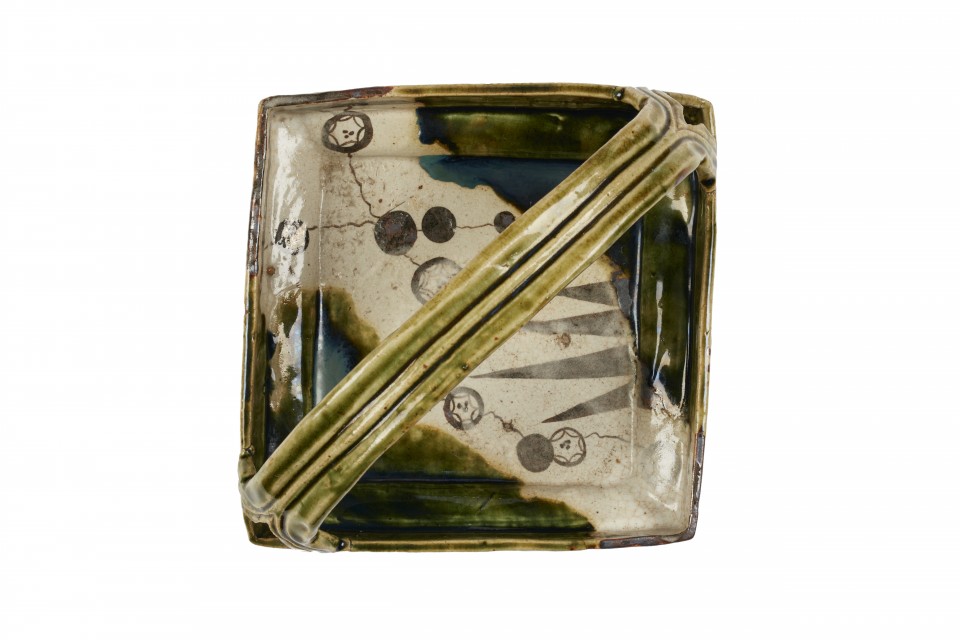
Photography by Synthescape, Digital image © Asia Society
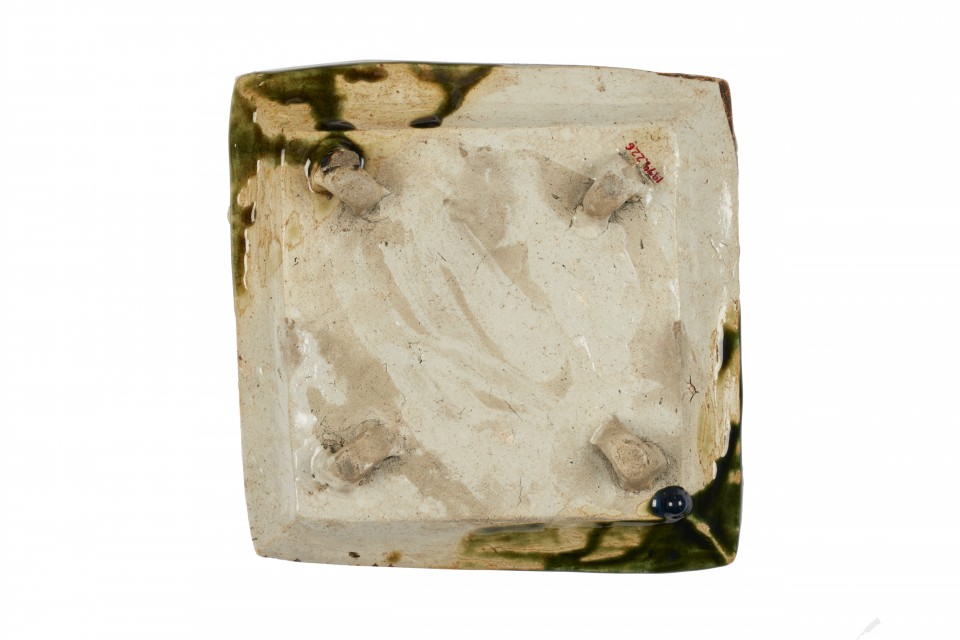
Photography by Synthescape, Digital image © Asia Society
Square Serving Dish with Bail Handle
Late 16th century
Japan, Gifu Prefecture
Stoneware painted with iron brown on slip under glaze and a partial overlay of copper-green glaze (Mino ware, Oribe type)
H. 5 1/2 including handle x W. 8 1/8 x D. 8 1/8 in. (14 x 20.4 x 20.4 cm)
Asia Society, New York: Mr. and Mrs. John D. Rockefeller 3rd Collection, 1979.226
Provenance
John D. Rockefeller 3rd, New York, NY, acquired from Setsu Gatodo Co., LTD., Tokyo, Japan, 1970.
The Asia Society, New York, NY, bequest of John D. Rockefeller 3rd, New York, NY, 1979.
Licensing inquiries
A bold fashion statement in vibrant green and playful designs, this striking dish would have been used to serve a main course during the kaiseki part of the tea ceremony. The participants would have appreciated the keen, of-the-moment sensibility of their host -- often an affluent merchant --for this style of ceramics was all the rage in early 17th-century Japan, especially in big cities like Kyoto and Osaka. Its name, Oribe, derives from that of a famous tea master, Furuta Oribe (1544-1615). Rather than evidence a direct patronage, such dishes reflect his preference for distinctive shapes and colors and quirky decorative patterns; the latter may also have been inspired by contemporary textile designs. The mold-formed square shape with a separately attached loop-handle, the combination of geometric and nature-inspired motifs, and especially the strategically splashed, bright green copper glaze, epitomize the individualism of Oribe ceramics, particularly one-of-a-kind pieces like this. Ironically, much of Oribe stoneware was mass-produced in multichambered, climbing kilns in the Mino region.






